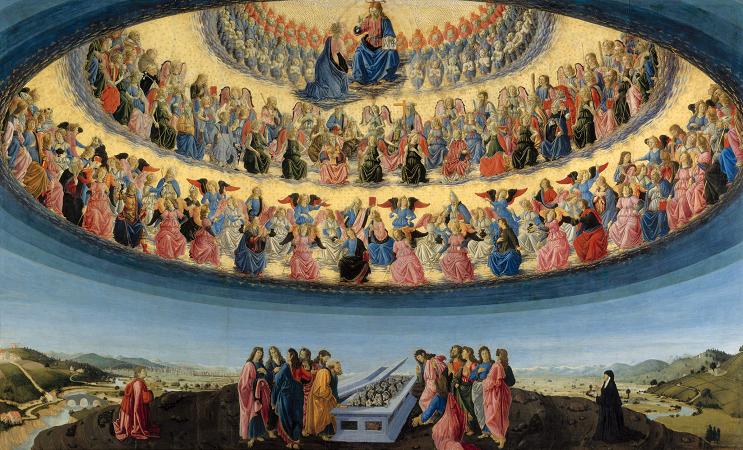Assumption of Virgin. The Assumption of Mary into Heaven is, according to the beliefs of the Catholic Church, Eastern and Oriental Orthodoxy, the bodily taking up of the Virgin Mary into Heaven at the end of her earthly life. In the churches that observe it, the Assumption is a major feast day, commonly celebrated on 15 August. In many countries, the feast is also marked as a Holy Day of Obligation in the Roman Catholic Church. The Catholic Church teaches as dogma that the Virgin Mary having completed the course of her earthly life, was assumed body and soul into heavenly glory. This doctrine was dogmatically defined by Pope Pius XII on 1 November 1950, in the apostolic constitution Munificentissimus Deus by exercising papal infallibility. While the Catholic Church and Eastern Orthodox Church believe in the Dormition of the Mother of God, whether Mary had a physical death has not been dogmatically defined. In Munificentissimus Deus Pope Pius XII pointed to the Book of Genesis as scriptural support for the dogma in terms of Mary's victory over sin and death through her intimate association with the new Adam as also reflected in 1 Corinthians 15:54: then shall come to pass the saying that is written, Death is swallowed up in victory. The New Testament contains no explicit narrative about the death or Dormition, nor of the Assumption of Mary, but several scriptural passages have been theologically interpreted to describe the ultimate fate in this and the afterworld of the Mother of Jesus. The Assumption was defined as dogma by the Catholic Church in 1950, when Pope Pius XII defined it ex cathedra in his Apostolic Constitution Munificentissimus Deus. The Catholic Church itself interprets chapter 12 of the Book of Revelation as referring to it. The earliest known narrative is the so-called Liber Requiei Mariae, which survives intact only in an Ethiopic translation. Probably composed by the 4th century, this Christian apocryphal narrative may be as early as the 3rd century. Also quite early are the very different traditions of the Six Books Dormition narratives. The earliest versions of this apocryphon are preserved in several Syriac manuscripts of the 5th and 6th centuries, although the text itself probably belongs to the 4th century. Later apocrypha based on these earlier texts include the De Obitu S. Dominae, attributed to St. John, a work probably from around the turn of the 6th century that is a summary of the Six Books narrative. The story also appears in De Transitu Virginis, a late 5th-century work ascribed to St. Melito of Sardis that presents a theologically redacted summary of the traditions in the Liber Requiei Mariae. The Transitus Mariae tells the story of the apostles being transported by white clouds to the deathbed of Mary, each from the town where he was preaching at the hour.The Decretum Gelasianum in the 490s declared some transitus Mariae literature apocryphal. An Armenian letter attributed to Dionysus the Areopagite also mentioned the supposed event, although this was written sometime after the 6th century. John of Damascus, from this period, is the first church authority to advocate the doctrine under his own name. His contemporaries, Gregory of Tours and Modestus of Jerusalem, helped promote the concept to the wider church. In some versions of the story, the event is said to have taken place in Ephesus, in the House of the Virgin Mary. This is a much more recent and localized tradition. The earliest traditions say that Mary's life ended in Jerusalem. By the 7th century, a variation emerged, according to which one of the apostles, often identified as St Thomas, was not present at the death of Mary but his late arrival precipitates a reopening of Mary's tomb, which is found to be empty except for her grave clothes. In a later tradition, Mary drops her girdle down to the apostle from heaven as testament to the event. This incident is depicted in many later paintings of the Assumption. Teaching of the Assumption of Mary became widespread across the Christian world, having been celebrated as early as the 5th century and having been established in the East by Emperor Maurice around AD 600.
more...














